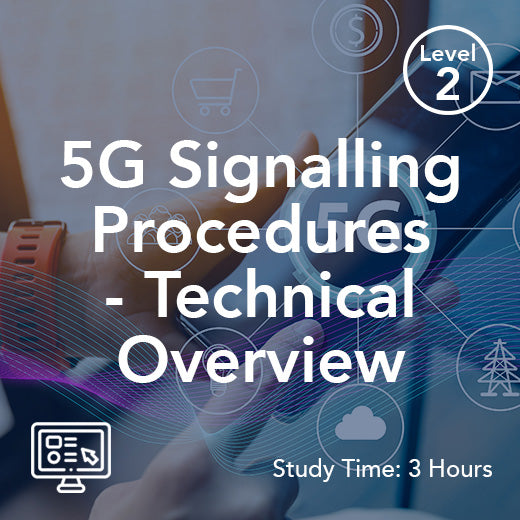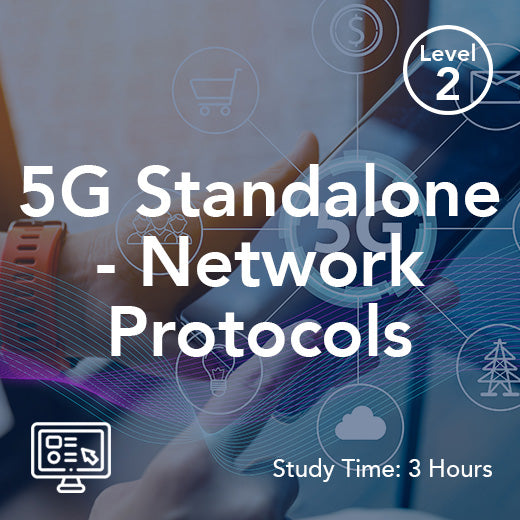Demystifying SIM Identity: What You Need to Know
- , by Stephanie Burrell
- 11 min reading time
In our increasingly digital world, understanding SIM identity has become essential for everyone who uses a mobile phone. Whether you are making calls, sending texts, or using data, your SIM card plays a crucial role in connecting you to your network. However, many people are unaware of what SIM identity is and why it matters. In this article, we will break down the basics of SIM identity, explaining its importance and how it impacts your day-to-day mobile activities. Read on to uncover everything you need to know about SIM identity.
Understanding SIM Identity
Basics of SIM Technology
A Subscriber Identity Module (SIM) card is a small, removable chip in your mobile phone that stores essential information. This includes your International Mobile Subscriber Identity (IMSI), which uniquely identifies you to your mobile network. When you insert a SIM card into your phone, it communicates with your network provider to authorise access to services like calling, texting, and data usage. SIM cards come in various sizes, such as standard, micro, and nano, but they all perform the same fundamental role. Additionally, SIM cards can store contacts and SMS messages, though this feature is less commonly used today due to smartphone advancements. Understanding the basics of SIM technology is the first step in grasping the concept of SIM identity and its significance in your mobile experience.
Role of SIM Cards in Communication
SIM cards play a pivotal role in mobile communication by acting as a bridge between your device and the mobile network. When you initiate a call, send a text, or access the internet, your SIM card authenticates your identity with the network provider. This authentication process allows you to access services seamlessly. Without a SIM card, most mobile phones would be unable to connect to a network, rendering them unable to perform basic communication tasks. Additionally, SIM cards facilitate roaming, enabling you to use your mobile services in different regions by connecting to partner networks. This functionality is crucial for maintaining communication when travelling abroad. By managing network connectivity and user identification, SIM cards ensure that communication remains efficient and secure, highlighting their indispensable role in our daily digital interactions.
Importance of SIM Identity
Security and Privacy Concerns
SIM identity is crucial for maintaining security and privacy in mobile communications. Your SIM card contains sensitive information that can be exploited if not properly secured. For instance, SIM swapping is a common scam where fraudsters gain control of your phone number by convincing your network provider to transfer your number to a new SIM card. This breach can lead to unauthorised access to personal accounts and sensitive data. To mitigate such risks, ensuring your network provider has robust security protocols is vital. Additionally, many mobile networks offer two-factor authentication (2FA) to enhance security, making it harder for hackers to compromise your information. By understanding and prioritising SIM identity security, you protect your personal data and maintain the privacy of your communications. Being aware of these concerns helps you take necessary precautions, ensuring your mobile experience remains safe and secure.
Impacts on Daily Life
SIM identity significantly impacts various aspects of our daily lives, often without us even realising it. From making phone calls to accessing mobile internet, the seamless connectivity that SIM cards provide is vital for modern communication. This connectivity allows us to stay in touch with family, friends, and colleagues, facilitating both personal and professional interactions. Moreover, SIM identity plays a role in enabling mobile-based services like banking, shopping, and social media, which have become integral to daily routines. Without a secure and reliable SIM identity, these services could be disrupted, affecting convenience and productivity. Additionally, SIM cards enable location-based services, providing navigation and emergency assistance when needed. Therefore, understanding and maintaining your SIM identity is not just a technical necessity; it is essential for ensuring that your daily activities proceed smoothly and securely in our increasingly connected world.
How SIM Identity Works
Authentication and Verification Process
The authentication and verification process of SIM identity is central to how mobile networks secure communication. When you insert a SIM card into your phone and switch it on, the device sends the SIM's unique IMSI number to the network provider. The network then cross-references this IMSI with its database to verify your identity. If the details match, the network grants access, allowing you to use its services for calling, texting, and data. This process happens almost instantaneously, ensuring seamless connectivity. Additionally, many networks employ encryption during this process to protect the transmitted data from potential interception. Regular updates and security patches are also applied to keep the authentication protocols robust against emerging threats. Understanding this process helps you appreciate the intricate security measures that safeguard your digital communication, highlighting the importance of a secure SIM identity in maintaining the integrity of your mobile interactions.
Storage and Data Management
SIM cards are not just about authentication; they also play a crucial role in data storage and management. Each SIM card contains a small amount of memory used to store essential data like your IMSI, contacts, and SMS messages. This data is typically encrypted to ensure security. While the storage capacity of SIM cards is relatively small compared to modern smartphones, it is sufficient for critical functions. In addition to personal information, SIM cards store network-specific data, such as service provider details and network settings, which help your phone connect to the appropriate network and optimise service quality. Managing this data efficiently ensures that your mobile experience is smooth and uninterrupted. As technology advances, the role of SIM cards in data management may evolve, but their fundamental purpose in storing and securing essential information remains indispensable.
Challenges in SIM Identity
Addressing Fraud and Theft
Fraud and theft pose significant challenges to SIM identity, necessitating robust security measures. One common issue is SIM swapping, where fraudsters trick network providers into transferring a victim's phone number to a new SIM card. This can lead to unauthorised access to personal accounts and sensitive information. To combat this, mobile network providers have implemented stringent verification processes, such as requiring multiple forms of identification before processing SIM swap requests. Additionally, many providers offer services like two-factor authentication (2FA) to add an extra layer of security. Users can also take proactive steps, such as setting up PIN codes for their SIM cards and being cautious about sharing personal information. By staying vigilant and adopting these security measures, both providers and users can significantly reduce the risk of fraud and theft, thereby protecting the integrity of SIM identity and ensuring safer mobile communications.
Technological Advancements and Solutions
Technological advancements are shaping new solutions to address challenges in SIM identity, enhancing both security and functionality. One such advancement is the emergence of eSIMs, which are embedded SIM cards that can be programmed remotely. This technology reduces the risk of physical SIM theft and enables easy switching between network providers without needing a physical card. Furthermore, eSIMs support enhanced encryption protocols, offering better protection against hacking attempts. Another promising development is the integration of biometric authentication, such as fingerprint or facial recognition, to verify user identity before allowing SIM-related changes. This adds a robust layer of security, making it harder for fraudsters to execute SIM swaps. Additionally, machine learning algorithms are being employed to detect unusual activity patterns, providing early warnings of potential fraud. These technological solutions are crucial in the ongoing effort to safeguard SIM identity, ensuring that users enjoy secure and seamless mobile experiences.
Future of SIM Identity
Trends and Innovations
The future of SIM identity is being shaped by several exciting trends and innovations. One such trend is the increasing adoption of eSIM technology, which eliminates the need for physical SIM cards and allows users to switch between multiple network providers seamlessly. This not only enhances user convenience but also provides additional security benefits. Another innovation is the development of iSIMs, or integrated SIMs, which are built directly into the device's hardware. iSIMs offer improved security and could potentially reduce manufacturing costs. Additionally, advancements in 5G technology are expected to revolutionise SIM identity by enabling faster and more secure mobile connections. The integration of artificial intelligence and machine learning into SIM management systems is also on the horizon, promising to enhance fraud detection and personalised user experiences. These trends and innovations indicate a future where SIM identity becomes more secure, flexible, and integral to our digital lives.
Implications for Consumers and Providers
The evolving landscape of SIM identity carries significant implications for both consumers and providers. For consumers, advancements like eSIM and iSIM technologies promise greater flexibility and security. Users will benefit from easier transitions between network providers and enhanced protection against fraud. Additionally, the integration of advanced security features, such as biometric authentication, will offer peace of mind when managing mobile services. For providers, these innovations present opportunities and challenges. They must invest in new infrastructure and systems to support technologies like eSIM and iSIM, ensuring compatibility and security across diverse devices. Providers will also need to enhance customer service to manage the complexity of digital SIM management. However, these changes also open up new revenue streams and the potential for more personalised service offerings. In sum, the future of SIM identity is poised to improve user experiences while compelling providers to adapt and innovate in a fast-changing digital environment.
SIM Identifiers and Their Role
Every Subscriber Identity Module (SIM) carries a set of unique identifiers that allow mobile network operators to authenticate subscribers and manage services. The most important is the International Mobile Subscriber Identity (IMSI), a number stored on the SIM that identifies the user within a mobile network. Alongside this, the Integrated Circuit Card Identifier (ICCID)—also called the ICCID integrated circuit card number—uniquely identifies the physical card itself. While the IMSI ties you to an individual account identification number, the ICCID is linked to the SIM’s production and distribution details, including the issuer identifier number and major industry identifier. Other identifiers, such as the International Mobile Equipment Identity (IMEI), uniquely identify the device rather than the SIM, helping carriers block stolen devices from accessing cellular networks. Together, these identifiers ensure secure and accurate authentication whenever a SIM card user connects to a carrier’s network.
SIM Form Factors and Modern Evolution
Over the years, SIM card technology has evolved through different form factors, from the original full-size SIM (credit card size) to mini SIM cards, micro SIM cards, and today’s nano SIM cards. Despite their physical size differences, all traditional physical SIM cards perform the same essential functions: storing the IMSI, authentication key, and other security mechanisms. In addition, many SIMs support the SIM Application Toolkit, allowing providers to deliver value-added services directly through the SIM. Newer technologies include the embedded SIM (eSIM), soldered directly into the device’s motherboard, and the integrated SIM (iSIM), which integrates SIM functionality into the chipset itself. These modern SIM solutions provide backward compatibility while offering benefits such as improved security, better network usage flexibility, and easier switching carriers without replacing a plastic card.
Multi-SIM and IoT Applications
As connectivity demands grow, multi-SIM devices and multi-IMSI SIMs have become increasingly common. Multi-network SIMs and multi-IMSI SIMs allow users or IoT devices to connect seamlessly across multiple networks, enabling global roaming and improved reliability. For example, logistics companies often use multi-network SIMs in sensors to ensure consistent connectivity across regions, while multi-SIM devices like smartphones or tablets allow users to manage multiple accounts in one device. In IoT deployments, SIM profiles can be remotely updated, making it possible to scale connectivity across thousands of mobile devices without swapping physical SIM cards. These capabilities extend the role of SIM identity far beyond mobile phones, ensuring that different networks and multiple devices can be managed under a secure and unified framework. This evolution highlights how SIM identification continues to adapt to new technologies, providing secure and scalable solutions for both consumers and industries.

































